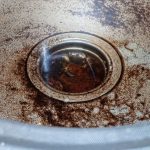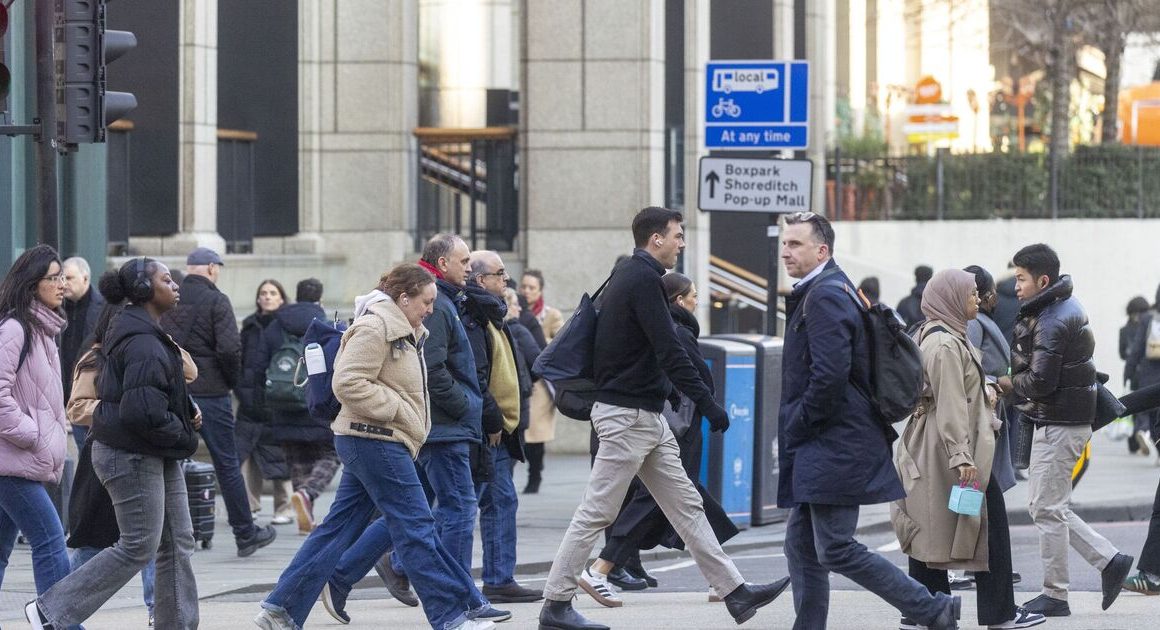Syrian rebel leader Ahmad al-Sharaa — better known as Abu Mohammed Al-Golani — said in a written statement Wednesday that he would dissolve the security forces of the toppled regime of Bashar al-Assad, news which comes as Syrians are beginning to adjust to the end of the regime.
The statement, shared exclusively with Reuters by his office, stated that he would also “close the notorious prisons,” where an estimated tens of thousands of detainees were held by the Assad regime for years.
Golani’s forces swept across Syria in a lightning offensive that overthrew 50 years of Assad family rule, replacing it with a three-month transitional government of ministers that had been ruling a rebel enclave in Syria’s northwest.
The military command affiliated with his group, which is known as Hayat Tahrir al-Sham (HTS), already said they would grant an amnesty to military conscripts prior to Wednesday’s announcement that security forces of the previous regime would be dissolved.
Life in the capital of Syria was slowly returning to normal on Wednesday after the overthrow of former president Assad and subsequent Israeli strikes that pummelled Syria in one of the most intense campaigns on the country in years.
A previously imposed curfew of 4 p.m. to 5 a.m. local time had officially been lifted as of Wednesday, Syrian rebel groups stated. They encouraged residents to return to their jobs.
Assad fled the country over the weekend and has been granted political asylum in Russia.
Private banks in Damascus reopened Tuesday on instructions from the central bank, said Sadi Ahmad, who runs a branch in the upscale Abu Rummaneh neighbourhood. He said all his employees returned to work.
Shops also reopened in the city’s ancient Hamidiyeh market. A clothing shop owner, who asked not to be named for fear of retribution, said he hoped vendors would no longer have to pay bribes to security officials.
At Bakdash, a famous ice cream shop, a poster outside read: “Welcome to the rebels of free Syria. Long live free Syria.”
Syrians across the city celebrated the fall of Assad, and hoped for an end to the relentless bribery demands that governed much of life.
“Damascus is more beautiful now,” said Maysoun Qurabi, who was shopping in the market. “It has a soul, and people feel at ease and secure.” Under Assad, she said, “people were hungry and scared.”
Shortly after the regime’s collapse, Israel carried out nearly 500 air raids in Syria, saying it hit “most of the strategic weapons stockpiles.”
Israel said its forces had destroyed Syria’s navy and acknowledged pushing into a buffer zone inside Syria following Assad’s overthrow. But it remained unclear if Israeli soldiers had gone beyond that area, which was established more than 50 years ago, and denied it was advancing on Damascus.
There were also signs of disorder. The United Nations said it is still receiving reports that humanitarian aid supplies were looted at UN warehouses and warehouses belonging to the Syrian Arab Red Crescent, including around Damascus.
- Just Asking wants to know: What questions do you have about what comes next for Syria? Fill out the details on this form and send us your questions ahead of our show this Saturday, Nov. 14 at 4 p.m. ET.
Syrians search morgues for those who died in prisons
Syrians are flocking to morgues in search of the bodies of loved ones who vanished into Syrian prisons during Assad’s regime. An estimated 150,000 have been detained or reported missing in Syria since 2011, and while some prisoners have walked free this week after the regime was toppled, many more are unaccounted for.
At a morgue visited by The Associated Press on Wednesday in Damascus, families crowded around a wall where pictures of bodies were pinned, desperately scanning the images for a recognizable face.

Identifying all of the bodies recovered from prisons will take time, said Dr. Abdallah Youssef, who works at the morgue.
“We understand the suffering of the families, but we are working under immense pressure. The bodies were found in salt rooms, exposed to extreme cold,” he said.
Golani said on Wednesday that anyone involved in the torture or killing of detainees during the Al-Assads’ rule would be hunted down and punished.
“We will pursue them in Syria, and we ask countries to hand over those who fled, so we can achieve justice,”he said in a statement published on the Syrian state TV’s Telegram channel.
During five decades of Assad family rule, Syria ran one of the most oppressive police states in the Middle East. Golani, whose former al-Qaeda affiliate HTS is now the country’s most powerful force, must balance demands for justice from victims with the need to prevent violence and secure international aid.
Insurgents set fire to Hafez Al-Assad’s tomb: war monitor
Insurgents have set the tomb of Syria’s former president Hafez Al-Assad in his hometown on fire, a war monitor and a local journalist said Wednesday.
Rami Abdurrahman of the Britain-based Syrian Observatory for Human Rights and Syrian journalist Qusay Noor told The Associated Press the tomb was set on fire Wednesday in the town of Qardaha, in Latakia province.
Hafez Al-Assad ruled Syria for 30 years until his death in 2000, when his son Bashar succeeded him. Both ruled Syria with an iron fist and were blamed for crackdowns that left tens of thousands dead.
After decades in power, the Assad regime has fallen to Syrian rebel groups led by Hayat Tahrir al-Sham. Andrew Chang breaks down the two weeks of intense fighting that led to this seismic breakthrough for rebel forces.
Images supplied by Getty Images, Canadian Press and Reuters Connect.
Additional credits: 0:05: BBC News/YouTube, 0:09: PBS NewsHour/YouTube, 0:13: Social media via Reuters, 0:14: Social media via Reuters, 1:52: FRANCE 24 English/YouTube, 1:56: FRANCE 24 English/YouTube, 1:57: ABC News (Australia)/YouTube
The world will be watching closely to see whether Syria’s new rulers can avert revenge attacks following civil war and decades of repression, often along sectarian and ethnic lines.
In his first brief address on state TV, new interim prime minister Mohammad Al-Bashir appeared in front of two flags: the green, black and white flag flown by opponents of Assad throughout the civil war alongside a white flag with the Islamic oath of faith in black writing, typically flown by Sunni Islamist fighters.
Security members of the rebel alliance in control of Syria have taken over the airport, hoping to restore security, a sense of confidence and the legitimacy needed to restart flights out of the capital and from one of the country’s three international airports.
“Damascus international airport is the heart of the city because it is the gateway for international delegations and missions,” Omar al-Shami, a security official with Hayat Tahrir al-Sham, the faction that led the shock offensive that led to the fall of Assad, told The Associated Press, calling it “the passage for Syria to breathe.”
Shami said security was restored at the international airport nearly 12 hours after the fall of Damascus. The factions entered the capital before dawn, and security members of the rebel alliance took charge before sunset on Sunday. He said he hoped the airport would be operational in less than a week.
UN chief sees ‘signs of hope’
UN Secretary-General Antonio Guterres said there were signs of hope in Syria following the overthrow of Assad by rebel forces over the weekend.
“As we speak, we are witnessing the reshaping of the Middle East…. We also see some signs of hope … coming from the end of the Syrian dictatorship,” Guterres said during a visit to South Africa on Wednesday.
Foreign officials are warily engaging with the former rebels, although HTS is still designated an international terrorist organization by the UN, the U.S., the EU and others.
In addition to terrorism bans in place against the former rebels, Syria also remains under U.S., European and other financial sanctions imposed against Damascus under Assad.
The new government has told business leaders it will adopt a free-market model and integrate into the global financial system after decades of state control, the head of the Damascus Chambers of Commerce, Bassel Hamwi, told Reuters.












